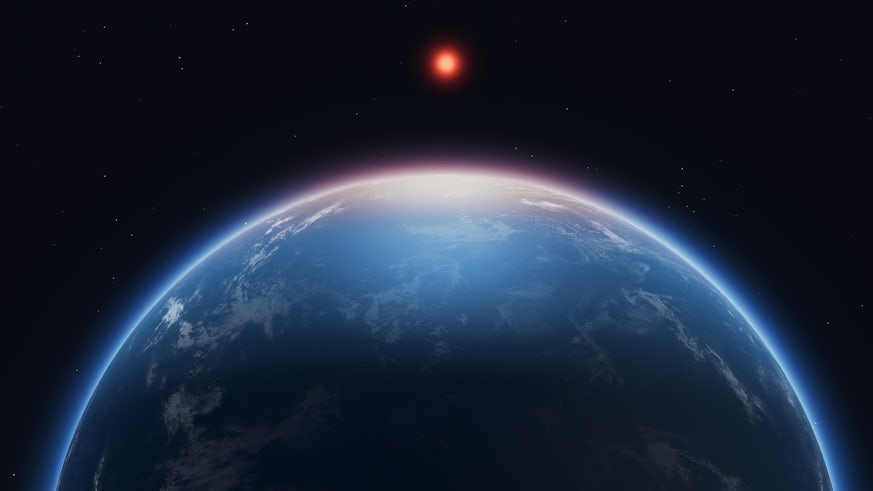Methane and carbon dioxide found in atmosphere of habitable zone exoplanet
25 September 2023

Astronomers have for the first time discovered carbon-based molecules in the atmosphere of an exoplanet in the habitable zone.
The international team, which includes Cardiff University astrophysicist Dr Subi Sarkar, used data from the James Webb Space Telescope (JWST) to detect methane and carbon dioxide in the atmosphere of K2-18 b.
Orbiting a red-dwarf star 124 light years away in the constellation of Leo, K2-18 b is a ‘sub-Neptune’ exoplanet 2.6 times the size of Earth and 8.6 times the mass of Earth.
While Earth-sized planets have been the focus of the search for habitable worlds and life elsewhere in the Universe, astronomers have theorised a new class of habitable planet called Hycean worlds where a water ocean could exist under a hydrogen-rich atmosphere.
The team’s latest findings, which have been accepted for publication in The Astrophysical Journal Letters, suggest K2-18 b could be a Hycean planet advancing the search for habitable planets and life.
“Although this kind of planet does not exist in our Solar System, sub-Neptunes are the most common type of planet known so far in the galaxy,” said co-author Dr Subi Sarkar of Cardiff University’s School of Physics and Astronomy.
“With the help of JWST’s near infra-red NIRISS and NIRSpec instruments, we have obtained the most detailed spectrum of a habitable-zone sub-Neptune to date.
“We used a technique called transit spectroscopy to extract the planet spectrum. This involves following the starlight over multiple wavelengths as the planet passes over the star, where the atmosphere blocks a small part of the light. The amount of starlight blocked will vary a little at each wavelength of light and by measuring this we can effectively trace out the spectrum of the molecules in the atmosphere.
“It is the combination of JWST’s space-based location, it’s large primary mirror and wide wavelength coverage that allowed us to extract a spectrum of this unprecedented precision.”
The researchers also identified a weaker signal in the spectrum of K2-18 b which could be caused by a molecule called dimethyl sulphide (DMS).
On Earth, DMS is produced almost exclusively by microbial life, suggesting the possibility of biological activity on K2-18 b.
While these signs of DMS are tentative and require further confirmation through additional observations, the researchers say that K2-18 b and other Hycean planets could be our best chance to find life outside our Solar System.
“Our findings underscore the importance of considering diverse habitable environments in the search for life elsewhere,” said lead author Professor Nikku Madhusudhan, from Cambridge’s Institute of Astronomy.
“Traditionally, the search for life on exoplanets has focused primarily on rocky planets, but Hycean worlds are significantly more conducive to atmospheric observations.”
“More observations are needed to determine whether it is in fact DMS that we’re seeing. The possibility of DMS in the atmosphere is highly promising, but we are planning to take another look to robustly establish its presence.”
The team's next round of Webb observations will use the telescope's Mid-InfraRed Instrument to further validate the results.
Professor Madhusudhan added: “Our ultimate goal is the identification of life on a habitable exoplanet, which would transform our understanding of our place in the Universe. Our findings are a promising first step in this direction.”



